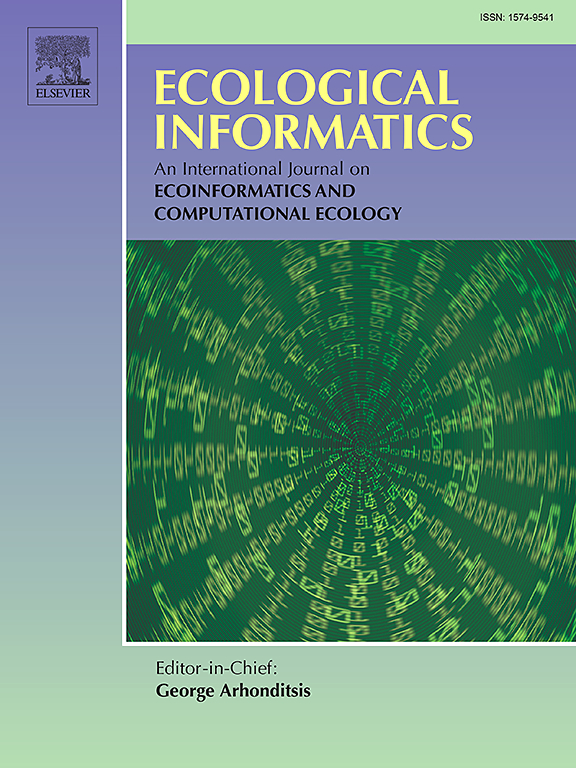Advancing soil biology research: Empowering European databases with ontological frameworks for enhanced data integration of soil biodiversity data
IF 7.3
2区 环境科学与生态学
Q1 ECOLOGY
引用次数: 0
Abstract
Recognizing soil biodiversity’s critical role in soil quality and health has gained prominence in environmental policy and research. There is a pressing need to integrate taxonomic data with functional traits to understand the functional significance of soil biodiversity and its distribution across various environmental contexts. This long-term goal can only be achieved after comprehensive taxonomy ontologies are in place.
Ontologies are a powerful tool to facilitate database interoperability, ensuring a seamless connection between diverse datasets. Adopting ontologies aligns with the FAIR principles, enhancing data discoverability, accessibility, and machine-readability. In biology, ontologies offer a robust framework for formalizing complex relationships between taxa, traits, and environments. Repositories like the OBO Foundry and NCBO BioPortal further promote the integration of controlled bioscientific vocabularies. However, careful selection of vocabulary is essential to ensure effective interoperability among ontologies, especially when dealing with closely related taxa.
While databases like Edaphobase provide comprehensive taxonomic information for soil invertebrate animals, they lack specific ontologies for the underlying taxonomic structure. This research addresses this gap by proposing the EUdaphobase Taxonomy Ontology (EUTaxO) tailored to soil biology taxonomy. As Edaphobase is continuously updated to accommodate changes in taxonomic classifications, the related EUTaxO will require maintenance. This work presents an automated pipeline to synchronize the proposed ontology with Edaphobase’s classification.
The integration of observational databases, such as Edaphobase, with domain-specific trait databases will enable the aggregation of species into functional or ecological groups based on traits. This integration, primarily reliant on taxonomic characteristics, will be critical in evaluating the spatio-temporal distribution of functional soil biodiversity across diverse habitats, soil types, climate zones, and land-use patterns.
推进土壤生物学研究:增强欧洲数据库的本体论框架,以增强土壤生物多样性数据的数据集成
认识到土壤生物多样性对土壤质量和健康的关键作用,已成为环境政策和研究的重点。因此,迫切需要将分类数据与功能性状相结合,以了解土壤生物多样性的功能意义及其在不同环境背景下的分布。只有在全面的分类法本体就位之后,才能实现这一长期目标。本体是促进数据库互操作性的强大工具,可确保不同数据集之间的无缝连接。采用本体符合FAIR原则,增强了数据的可发现性、可访问性和机器可读性。在生物学中,本体为类群、特征和环境之间的复杂关系的形式化提供了一个强大的框架。像OBO Foundry和NCBO biopportal这样的存储库进一步促进了受控生物科学词汇表的集成。但是,仔细选择词汇表对于确保本体之间的有效互操作性至关重要,特别是在处理密切相关的分类群时。虽然像Edaphobase这样的数据库为土壤无脊椎动物提供了全面的分类信息,但它们缺乏针对潜在分类结构的特定本体。本研究通过提出适合土壤生物学分类学的EUdaphobase分类本体(EUTaxO)来解决这一空白。由于Edaphobase不断更新以适应分类学分类的变化,相关的EUTaxO将需要维护。这项工作提出了一个自动化的管道来同步提出的本体与Edaphobase的分类。将观测数据库(如Edaphobase)与特定领域特征数据库相结合,可以根据特征将物种聚集到功能或生态类群中。这种主要依赖于分类学特征的整合,对于评估不同生境、土壤类型、气候带和土地利用模式下功能性土壤生物多样性的时空分布至关重要。
本文章由计算机程序翻译,如有差异,请以英文原文为准。
求助全文
约1分钟内获得全文
求助全文
来源期刊

Ecological Informatics
环境科学-生态学
CiteScore
8.30
自引率
11.80%
发文量
346
审稿时长
46 days
期刊介绍:
The journal Ecological Informatics is devoted to the publication of high quality, peer-reviewed articles on all aspects of computational ecology, data science and biogeography. The scope of the journal takes into account the data-intensive nature of ecology, the growing capacity of information technology to access, harness and leverage complex data as well as the critical need for informing sustainable management in view of global environmental and climate change.
The nature of the journal is interdisciplinary at the crossover between ecology and informatics. It focuses on novel concepts and techniques for image- and genome-based monitoring and interpretation, sensor- and multimedia-based data acquisition, internet-based data archiving and sharing, data assimilation, modelling and prediction of ecological data.
 求助内容:
求助内容: 应助结果提醒方式:
应助结果提醒方式:


